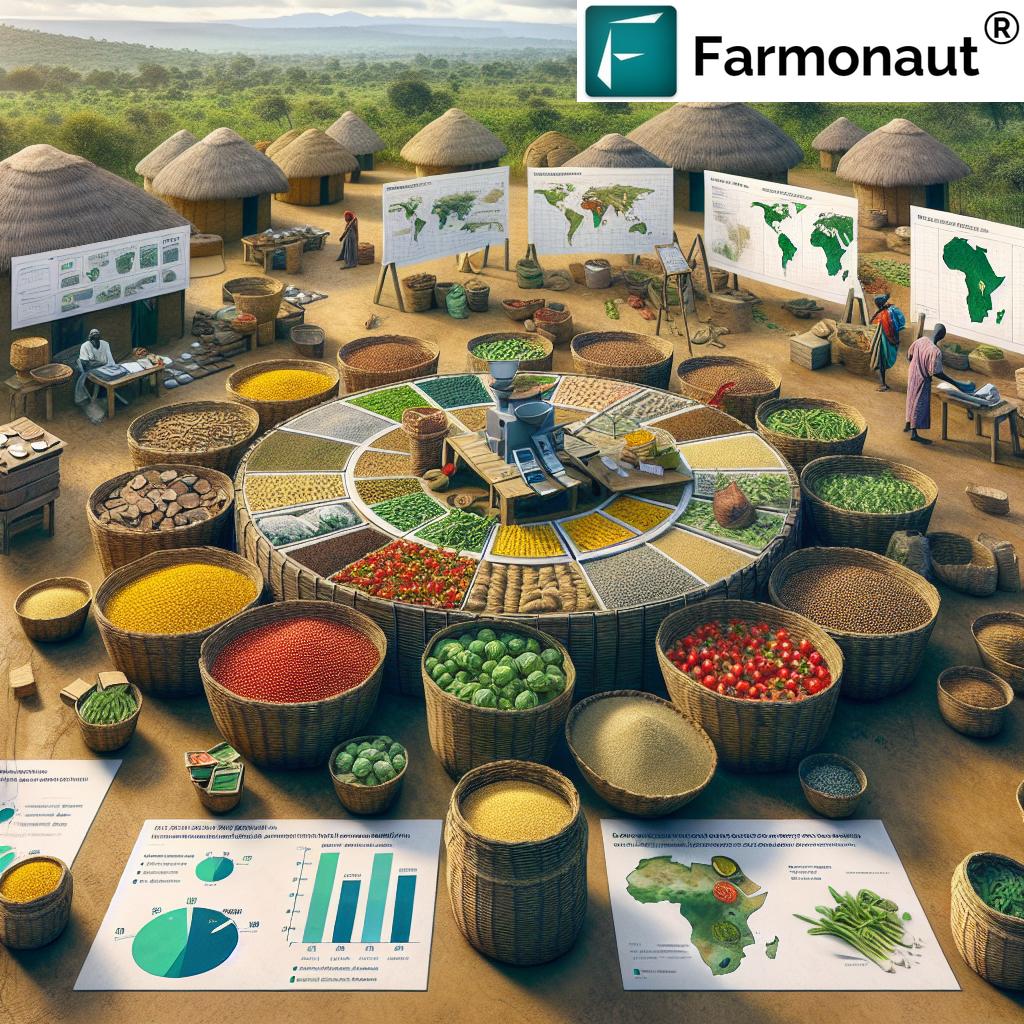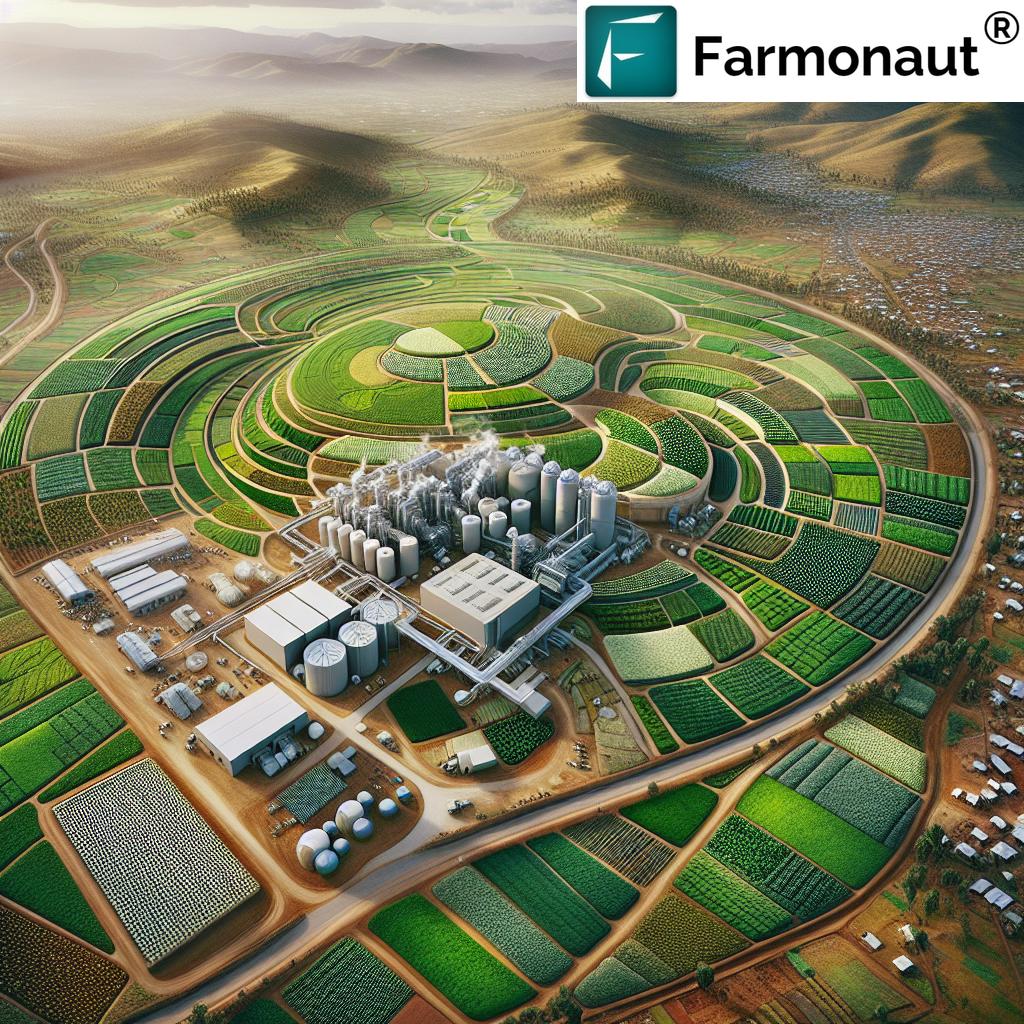5 Key Steps for Resilient African Agriculture and Food Systems
“Over 60% of Africa’s population relies on agriculture, making resilient food systems vital for economic stability.”
Introduction: Africa’s Agricultural Transformation at a Crossroads
Africa stands at a pivotal crossroads in its agricultural transformation. The urgent need for resilient African agriculture and food systems has never been clearer. With the African Union Commission (AUC) launching the groundbreaking Comprehensive African Agricultural Programme (CAADP) Strategy and Action Plan 2026–2035 in Addis Ababa—heralded by the Kampala Declaration in South Africa—a bold new vision for sustainable food systems in Africa takes center stage.
Our continent faces simultaneous challenges: relentless climate stress, significant post-harvest losses, weak rural infrastructure, and economic shocks. Yet, the potential is astounding: Africa’s fertile soil is a seed of hope, with the right strategies promising both a bountiful harvest and broad prosperity for our people.
The newly launched CAADP Strategy and Action Plan sets ambitious targets—mobilizing 100 billion USD, boosting output by 45 percent, tripling intra-African trade, and halving post-harvest losses. Moses Vilakati, AUC Commissioner for Agriculture, Blue Economy, and Sustainable Environment, reminds us that our journey traversed from the Maputo Declaration, through the Malabo Declaration, to the Kampala Declaration. Despite budgetary and infrastructure challenges, union Member States remain steadfast in their commitment to transforming food and agricultural systems for a sustainable, self-sufficient future.
As we explore the five key steps for resilient African agriculture and food systems, let us nurture this vision with strategic action—enabling not only food security but also the realization of Africa’s full economic potential.
Step 1: Embracing Comprehensive and Strategic Agricultural Planning
The Role of the CAADP Strategy and Action Plan in African Agricultural Transformation
The CAADP Strategy and Action Plan is Africa’s guiding document for holistic agricultural sector development, transcending a mere focus on production. It forges coherence across production, processing, distribution, and consumption—paving the way for sustainable food systems Africa and resilient agrifood systems.
- Vision: To transform the continent’s agriculture, fostering food security, healthy diets, and a prosperous, sustainable future.
-
Key Targets:
- Mobilize 100 billion USD in investments to fuel economic growth and innovation
- Boost agricultural output by 45% for both domestic supply and trade
- Triple intra-African trade and halve post-harvest losses
- Engage all member states in meeting and exceeding Malabo commitments
- Strategic Focus: This plan recognizes that agriculture underpins ecosystem health, blue economy development, and climate resilience.
Why Comprehensive Planning Works:
- Coherence: Aligns national efforts, targets, and budgeting, addressing previous gaps in advocacy and resource allocation.
- Accountability: Establishes a framework for monitoring progress and adjusting strategies across diverse countries and environments.
- Sustainability: Encourages nature-positive agricultural production systems, restoring soils and biodiversity.
By creating a greater sense of shared purpose across Africa’s member states, we amplify both regional and local impact, ensuring no region or population is left behind.
Example: CAADP’s Tripartite Action
The trio of production, trade, and post-harvest management illustrates how CAADP’s comprehensive approach goes beyond farm output. It streamlines agricultural sector development in Africa—from soil management to market access—driving transformation across the entire system.
Why This Step Is Foundational to Resilient Agrifood Systems
- Sets the stage for all future interventions, aligning initiatives for maximum impact
- Encourages data-driven monitoring (through platforms like Farmonaut) to guide course corrections
- Empowers member states with customized roadmaps, from Addis Ababa to South Africa
“Sustainable strategies could increase African agricultural productivity by up to 70% by 2050, ensuring food security.”
Step 2: Advancing Technology and Data-Driven Precision Agriculture
Unlocking Sustainable Food Systems Africa Through Innovation
Digital transformation is not optional—it is essential. Precision agriculture leverages technology to make every hectare count and every seed in Africa’s soil more productive.
- Satellite Imaging: Solutions like Farmonaut’s platform enable real-time monitoring of crop health, assessing vegetative indices such as NDVI, soil moisture, and more—empowering smarter irrigation, fertilization, and large-scale farm management.
-
AI & Advisory Systems: Jeevn AI and similar tools analyze weather and field data to provide instant, actionable advice on crop cycles and resource allocation.
Learn more about precision-driven plantation and forest advisory here. - Blockchain Traceability: Blockchain-based solutions create secure, transparent agri supply chains, enhancing market trust for both domestic and export products.
-
Resource & Fleet Optimization: Fleet management platforms help agribusinesses reduce operational costs, optimize logistics, and minimize losses.
See how fleet management solutions can streamline agribusiness operations. -
Environmental Intelligence: Tracking carbon emissions with real-time data enables sustainable practices, ensuring compliance with global standards.
Understand the benefits of carbon footprinting in agriculture
Precision Farming for Smallholders and Commercial Farms
From small family plots in Uganda to large plantations in Nigeria, precision technology democratizes access to information, reduces input costs, and directly contributes to a self-sufficient, healthy, and prosperous Africa.
- Farmonaut offers flexible, scalable packages—suitable for both smallholder and commercial farms, facilitating widespread adoption of resilient agricultural production systems Africa.
Impact on Africa Food Security Initiatives
- Better use of water, fertilizer, and pesticides reduces environmental impact
- Early warning of pest outbreaks prevents devastating crop losses
- Data-driven advice boosts yields and farmer incomes, directly supporting africa economic growth agriculture
APIs for Custom Agricultural Solutions
For developers, farm management platforms like Farmonaut offer robust API access and developer docs for integrating satellite and weather insights into third-party apps.
Access detailed documentation: Farmonaut API Developer Docs
Step 3: Strengthening Infrastructure and Post-Harvest Systems
Reducing Post-Harvest Losses: The Hidden Key to Food Security
In Africa, post-harvest loss reduction can be as transformative as increasing production. Losses claim up to 30-40% of many staple crops after harvest, directly undermining food security and economic growth.
- Challenges: Insufficient storage, poor transportation, and limited processing infrastructure are critical bottlenecks.
-
Solutions:
- Enhance rural roads, storage facilities, and market linkages using targeted investment from the CAADP plan
- Leverage technology for logistics optimization, ensuring perishable goods reach markets promptly
- Expand local processing industries to add value, create jobs, and drive intraregional trade
The Promise of Halving Post-Harvest Losses
Imagine if we could cut losses in half; that alone would feed tens of millions more Africans, reduce the need for imports, and save billions in lost output.
Adopting digital storage and fleet management (see: agrobusiness fleet management solutions) can stretch food supplies and stabilize prices.
In the context of africa food security initiatives, robust infrastructure translates aspirations into practical, everyday food security.
-
Blockchain traceability can certify product integrity—especially important for exports and sensitive value chains (e.g., cocoa, coffee, and horticulture).
Discover how traceability improves food systems reliability.
In Practice: Enabling Resilient Agrifood Systems
- Processing: Upgrading agro-processing clusters maximizes value addition and market stability
- Distribution: Fueling pan-African trade and local market access, as envisioned by the Kampala stage
- Consumption: Diversifying diets for health and economic prosperity
This step directly supports all aspects of the Malabo commitments by ensuring that agricultural output translates into real nutrition gains and population-wide benefits.
Step 4: Mobilizing Investment for Sustainable Growth
100 Billion USD: Financing Africa’s Food Security & Growth
The CAADP Action Plan aims to mobilize 100 billion USD—a quantum leap in investment. Why is this so critical? Agricultural transformation needs a constant flow of funds not just to produce more, but to do better across all stages of the agrifood system.
- Public Financing: At least 9% of many national budgets are already allocated to climate response and food security goals. Boosting this share is essential for scaling infrastructure and innovation.
- Private Sector Engagement: Attracting agribusiness, financial institutions, and local entrepreneurs fuels growth and flows directly into jobs, rural prosperity, and innovation.
-
Access to Finance for Farmers:
Satellite-based verification for crop loans and insurance helps banks and farmers build trust, reduce fraud, and unlock credit for long-term investment. - Foreign Direct Investment (FDI): Environmentally and socially responsible FDI brings technology, expertise, and market linkages to rural areas.
Investment for the Future: From Soil to Plate
True transformation of agricultural production systems in Africa occurs when capital flows:
- To scientifically managed seeds and fertilizers
- Into irrigation, storage, and market infrastructure
- Into crop health diagnostics and predictive analytics
- Into value chain expansion—creating jobs and increasing GDP
When these investments are paired with nature-positive approaches (restoring soil, enhancing biodiversity), the benefits multiply.
Five Investment Streams to Watch
- Climate-resilient seeds and cropping systems
- Post-harvest cooling and distribution hubs
- Digital advisory and traceability platforms
- Green infrastructure for sustainable irrigation and energy
- Youth and women’s agribusiness incubation
Investment + Innovation = Accelerated Progress
The mobilization of capital, paired with data analytics (from carbon footprint tracking to field diagnostics), ensures that every dollar spent delivers measurable returns for food security and economic growth.
Step 5: Building Climate-Resilient & Sustainable Agrifood Systems
Adapting African Agriculture for Climate Change
No region is more vulnerable to climate shocks than Africa—9 of the 10 most affected countries globally are on the continent. Union member states now devote a growing share of budgets to climate adaptation and mitigation.
- Nature-Positive Approaches: Restoration of degraded lands, smart water management, and agroforestry protect both soils and ecosystems.
- Diversification & Resilient Seeds: Adopting drought- and pest-resistant seed varieties ensures harvests even in erratic conditions.
- Early-Warning & Digital Advisory: Leveraging satellite-based meteorological insights (through platforms like Farmonaut) gives farmers the predictive power to act swiftly—minimizing climate-induced losses.
- Carbon Footprinting and Emissions Monitoring: Enabling tracking and reduction of farm-level greenhouse gas emissions, turning climate action into financial and environmental benefits.
Long-Term Resilience for Africa’s Future
By taking urgent action now, we protect the livelihoods of hundreds of millions, anchor food security, and lay the foundation for africa economic growth agriculture that endures for generations.
Alignment With Global and Pan-African Commitments
- Supports the Sustainable Development Goals of no poverty and zero hunger
- Aims to surpass Malabo and Kampala targets
- Prepares the sector for shocks—from pandemics to climate disasters
Comparative Impact Table: 5 Key Steps for Resilient African Agriculture
| Key Resilience Step | Sustainable Yield Increase (%) | Economic Growth Potential (USD millions) |
Food Security Improvement (est. % population) | Timeframe for Results (years) |
|---|---|---|---|---|
| Strategic Agricultural Planning (CAADP) | +12–18% (across regions) | 30,000–50,000 | 18–25% | 3–7 |
| Precision Tech & Data-Driven Agriculture | +18–25% | 28,000–38,000 | 17–23% | 2–5 |
| Infrastructure & Post-Harvest Systems | +8–14% (above baseline) | 16,500–23,000 | 12–19% | 3–8 |
| Investment Mobilization | +10–16% | 25,000–40,000 | 16–22% | 1–4 |
| Climate-Resilient Agrifood Systems | +12–20% | 22,000–32,000 | 13–24% | 4–10 |
“Sustainable strategies could increase African agricultural productivity by up to 70% by 2050, ensuring food security.”
Advanced Technologies Empowering Our Journey
Farmonaut’s Role in Realizing Sustainable Food Systems Africa
Modern agritechnology companies like Farmonaut are central to Africa’s transformation, providing affordable precision tools for both smallholder and large-scale farming. Let us review how these technologies fit these five steps:
- Satellite-Based Monitoring: Real-time aerial insights reveal crop health, soil moisture, and stress—empowering data-driven interventions for yield, food security, and climate resilience.
- AI Advisory (Jeevn AI): Rapid, intelligent suggestions tailored to each farm’s geography and climate, directly boosting efficiency and livelihood.
-
Blockchain Traceability: Food products are tracked from farm to market, increasing consumer confidence and connecting African farmers to premium buyers.
Explore traceability solutions for Africa’s food system integrity. -
Resource & Fleet Management: Effective use of assets, improved logistics, and reduced post-harvest losses.
Discover fleet & resource management technology for African agribusinesses. -
Carbon Footprinting: Quantify and act upon agricultural emissions for green compliance and climate funding.
Learn how carbon footprinting future-proofs your operations.
Our journey is ambitious, but technology like Farmonaut’s—delivered via web, Android, iOS, and developer API—removes historical cost and access barriers across all member states.
For precision-driven crop area estimation, plantation monitoring, and digital resource management, Farmonaut is your platform of choice for resilient agrifood systems in Africa.
Explore the power of Farmonaut’s large-scale farm management app
Frequently Asked Questions (FAQ) – African Agricultural Transformation
What is the CAADP Strategy and Action Plan?
The CAADP Strategy and Action Plan 2026-2035 is a comprehensive roadmap initiated by the African Union Commission to guide Africa towards food security, economic growth, and resilient, sustainable food systems. It emphasizes strategic investments, technology, infrastructure, and climate adaptation to holistically transform the sector.
Why are resilient agrifood systems critical for Africa?
Over 60% of Africa’s population relies on agriculture for their livelihoods. Climate change, post-harvest losses, and weak infrastructure threaten food security and economic stability. Resilient agrifood systems ensure continuous output, income stability, and sustainability across member states.
How do precision agriculture and data-driven insights help?
Precision tools—such as satellite monitoring, AI advisory, and blockchain traceability—enable farmers and businesses to maximize yields, minimize losses, improve resource use, and build trust within the market—fueling both production and sustainable growth.
What role does investment play in transforming African food systems?
Mobilizing significant public and private investment (like the CAADP’s 100 billion USD target) is vital for upgrading infrastructure, supporting research, expanding finance for farmers, and scaling innovation across the agricultural sector.
How can I access modern agricultural management tools in Africa?
You can access advanced farm management, monitoring, and advisory solutions through Farmonaut’s web, Android, and iOS platforms. For custom solutions, utilize their API offerings for seamless integration into your agribusiness systems.
What is the expected impact of these strategies by 2035?
By embracing the five steps—strategic planning, precision technology, robust infrastructure, investment, and climate action—Africa could see up to 70% productivity gains, dramatic reductions in losses, and significant leaps in both economic wellbeing and food security for its population.
Conclusion: A Resilient, Prosperous Future for African Agriculture
The path to african agricultural transformation is complex yet achievable. Through the CAADP strategy and action plan, Africa’s union of member states is poised to drive sustainable food systems that withstand economic, environmental, and social shocks—ensuring prosperity for current and future generations.
With innovative technology solutions—like those offered by Farmonaut—our journey becomes actionable, data-driven, and inclusive. The future of Africa’s food systems is not only about greater output, but about holistic transformation: nutritious food, thriving economies, ecological health, and resilient communities.
Let us mobilize, innovate, and grow together—realizing Africa’s immense promise, one resilient harvest at a time.















